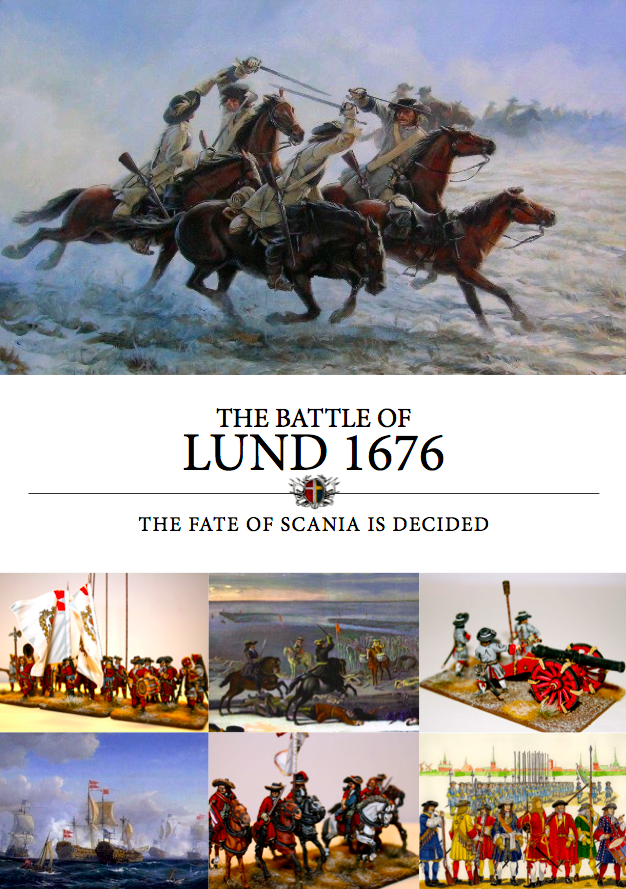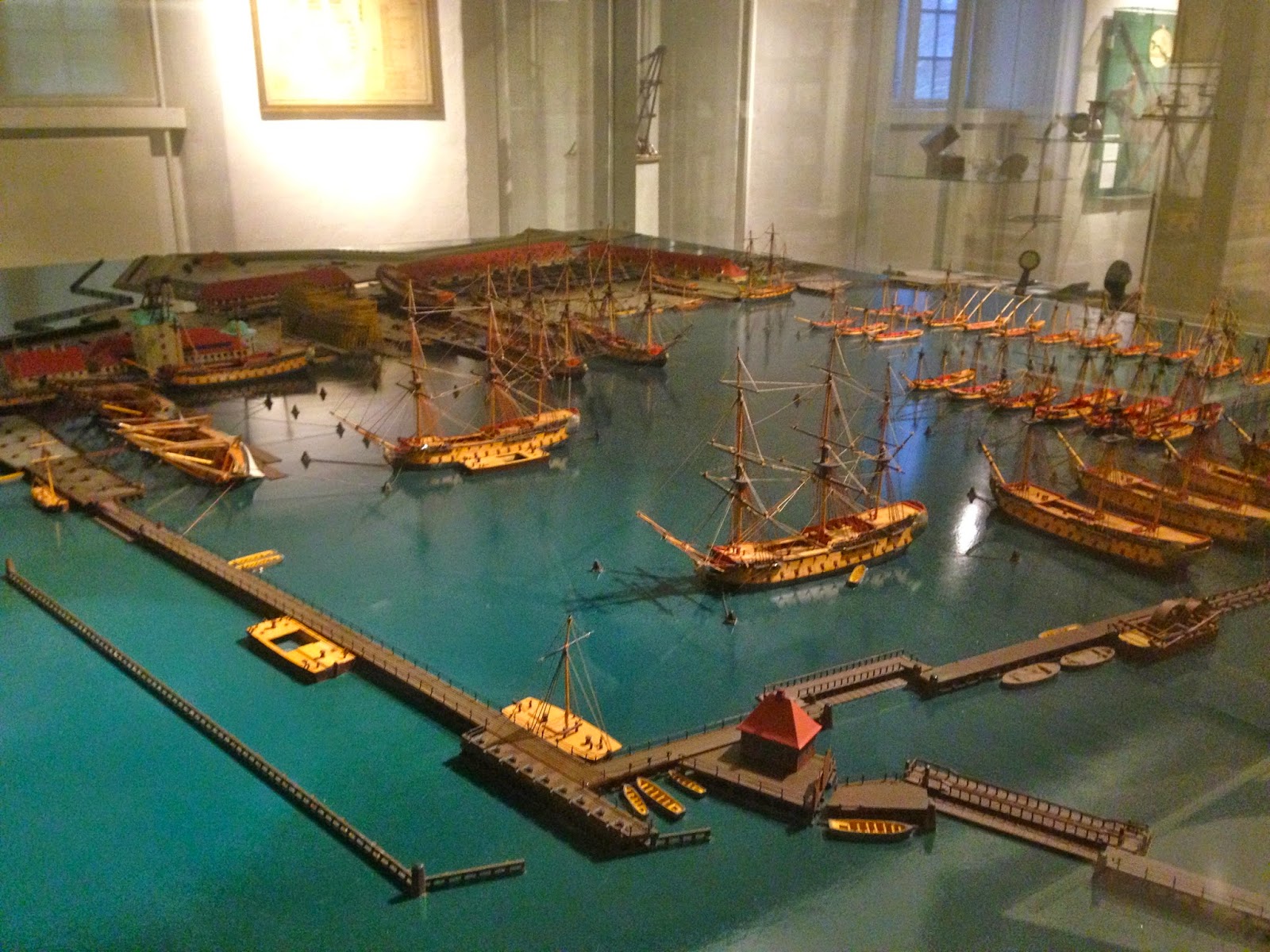Christian V symbolically charging over a
broken Swedish cavalry standard.
Dear readers, in a few weeks I head out for Copenhagen together with fellow club members Michael and Jesper, for a visit to this year’s DffCon gaming convention, where we are hosting a string of scenarios based on the Battle of Lund 1676.
For the purpose of these games I’m at the moment finishing up all the command stands.
Last week saw the Swedish King mount his horse and head out for battle – this week time has come to the King of the Danes, Christian V.
The East Danish provinces;
Skåne, Halland and Blekinge - lost in 1658.
The location of Lund can be seen on the map too.
Christian was born 1646 in the Danish controlled duchy of Schleswig. He was a prince of the House of Oldenburg, descendants of the Jellinge Dynasty (The dynasty which has been in power the longest in all European history, more than 1100 years).
Another shot of the charging king.
The figure is from NorthStars 1672-range.
Ascending to the Danish Throne in 1670, his kingdom had suffered terribly under his father, Frederik III. The economically and socially important East Danish provinces had been lost to Sweden in 1658 during the peace settlement following the ”Karl-Gustav” Wars.
This meant that not only had Denmark lost some 20% of its population, but also the strategic position as gatekeeper at Øresund, with the profitable trade taxations and most importantly its richest province of them all – Skåne (Scania).
King Christian V.
1646 - 1699.
Christian V would his entire life look across the waters from Copenhagen, eying his lost dominions in the horizon and feeling a call of destiny to take back what had been lost.
Through unintended diplomatic entanglements the opportunity arose in 1675, when France had forced Sweden to make war on Brandenburg, the ally of Denmark. Christian V declared war on Sweden, and preparations for a recapture of the eastern provinces began.
The coronation of the King in 1670.
After a successful campaign against the Swedish foothold in Germany, and the establishing the Danish naval supremacy, Christian V had the opportunity to move the war to Scania by a naval landing of his army.
On the 29th June 1675 Christian V and an army of 15.000 lands at Råå on the Swedish coast, crossing the only 5 mile wide strait. With his army watching from the enormous 500-ship transport fleet, Christian V is rowed in to the beach. As he leaps out of the boat and the sand of this old Danish dominion is again touched by its king, cheers from the many boats are heard. In response Christian V, this wonderful man, treats his audience to a little victory dance as he jumps and skips around with joy. He has his life’s goal in sight.
The massive 17 x 7 meter Danish flag - the picture is from 1977.
It was captured by the Swedes 1677, and is to this day kept in Stockholm.
Initial Danish success in the Scanian campaign saw the Swedish army retreat north to Småland, while awaiting reinforcements. Meanwhile a curious manifestation of Danish victory fever occurred. Christian V ordered a mammoth sized Danish flag to be sewn up, and hoisted from the fortress tower of Helsingborg. The flag was 17 x 7 meter (!!!), large enough to be clearly seen from the Danish coast across Øresund. It was a sign to Denmark that Scania had come back to its former owner.
A frogs view of his majesty.
No shortage of laces on neither horse or rider.
Later that year, well in control of Scania and the war, Christian V returned to Copenhagen in order to prepare for Christmas. However news of the Swedish army approaching from Småland compelled the King to return to his army, now encamped outside Lund in prepared winter quarters.
On the 4th December 1676, the fateful battle of Lund took place. Danish losses were crippling and Christian V was forced to allocate further funds for reinforcements and materiel. But in effect Lund was the beginning of the end. Never again during the Scanian War did the Danish army hold such a tight grip on its former provinces, or on the outcome of the campaign.
Christian V at the capture of Landskrona 1676.
A year later he would meet defeat at this very same location.
A further defeat of the Danish army at Landskrona on July 14 1677 settled the question to any effect. The war would drag on, but the young Swedish monarch had successfully defended his inheritance, and before either Charles or Christian could get a chance to sit down for a proper peace settlement, Louis XIV (Swedish ally) and the Dutch (Danish ally) had passed a peace resolution including a status quo in Scandinavia.
Both Christian and Charles were furious. Both had lead their armies from the front, both had seen war in the eye and risked everything for the price. And now, they had to sit down like two naughty schoolboys and take dictate. Newer again would Christian hope to gain back Scania, and never again would Charles entangle Sweden into such close an alliance with France.
Front view - the command base is 3 inches wide.
Suitable for the C-in-C.
Christian V lived on for many more years, focussing his energy on renovating his capital, Copenhagen. It is due to his work that we today can enjoy a cold beer in the charming Nyhavn area, and on the “Kongens Nytorv” square next into you find the huge commemorative statue of this gentle but firm king.
Rosenborg Castle in central Copenhagen.
In the fall of 1698 Christian was mortally injured in a hunting accident. In pursuit of a deer, the king stormed up to the animal to finish it off, but the wounded deer kicked the king with such force, that he would never recover, but instead died after a long struggle to regain his health.
Today the “king-killer” deer can be viewed at the Rosenborg Castle in Copenhagen.
Thank you very much for reading!











































